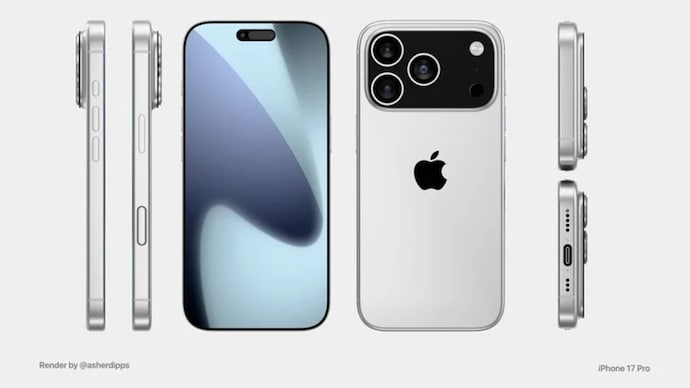The iPhone 17 Pro is ready to launch with 4 new camera features
The iPhone 17 Pro has been in the rumor for some time and most of the details have already been leaked. Now, a new report states that the device will be launched with at least four new camera features.
Listen to the story

In short
- The iPhone 17 Pro is designed to launch with 4 new camera features
- Both front and rear camera systems will allegedly upgrade
- Apple is also likely to change the back camera design of the Pro model
Apple is still a few months away from launching its iPhone 17 lineup, but the initial details have already started a discussion. According to a new report, the upcoming iPhone 17 Pro and the iPhone 17 Pro Max models are likely to be upgraded to some remarkable camera. These improvements can help Apple further strengthen the camera game on their high-end smartphones, which are already popular for photography and video performance.
One of the biggest expected changes is upgraded to the telephoto camera. Apple introduced a 48-megapixel main camera with the iPhone 14 Pro and later improved the ultra-wide lens with the iPhone 16 Pro to 48-megapixels. Now, along with increasing the resolution of telephoto sensor to the company, the iPhone 17 Pro model is being worked to bring up to 48-megapixels on the model. If this happens, all three cameras on the back will offer 48-megapixel resolution. This will not only provide sharp images, but can also improve zoom performance and allow long distances for more detailed photos. It remains to be seen whether the apple camera will change the current 5X zoom interface in the app.
According to 9to5MAC, the second major feature is multi-camera video recording. While this functionality has been available through the third-party application over the years, Apple has never introduced it in its original camera app. This may change this year, as the iPhone 17 Pro series is expected to bring this feature officially. This will allow users to shoot videos using several lenses simultaneously, such as recording with both ultra-wide and telephoto cameras together, which will give more flexibility to the creators. It is not yet clear whether there will be a hardware-specific upgrade bound by this feature, but it seems that Apple is planning to make it unique for the new Pro model for now.
Another area attracting attention is the front camera. Apple has allegedly decided to double the resolution of its truedepth selfie camera from 12-megapixels to 24-megapixels. This can apply not only to Pro model but also to regular iPhone 17 and iPhone 17 Air. Upgrade is expected to improve the quality of selfie and video calls, especially in low light. The current front camera setup has been mostly unchanged over the last few years, so it will be a welcome refreshing.
Apart from technological upgrades, Apple is also planning to reidisine of the rear camera module. The current setup, which many users call a camera “bump”, can be replaced with a new layout that moves in the width of the phone in the width of the phone like the camera bar or “island”. This means that flash and other components can be reposed for better vacancy. The purpose of design change may be to make space for better camera sensors or manage the internal space of the device more efficiently.
These changes indicate that Apple continues to focus too much on camera capabilities in its pro model. While the iPhone 17 Air can draw users in search of a light and thin device with a competent camera setup, people who want the best photography features will probably look more attractive to the iPhone 17 Pro and Pro Max.
After Apple’s normal timeline, the iPhone 17 series is expected to be launched in September. However, there are indications that this may occur last time when the company follows the same pattern for standard model release, there is a possibility of some changes since 2026. For now, Apple has not officially confirmed any of these facilities. But if these reports are correct, the iPhone 17 Pro can offer one of the most important camera upgrade in recent years.